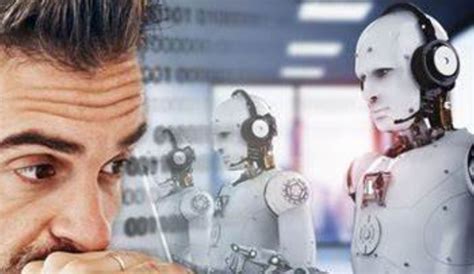Introduction
Artificial Intelligence (AI) is rapidly transforming various industries, including the pet care sector. AI-powered robot pets have emerged as potential game-changers, raising questions about their impact on job displacement and employment. This article examines the potential implications of robot pets on the pet care workforce and explores the opportunities they may create.

Potential for Job Displacement
One primary concern is whether robot pets will displace jobs currently held by humans. According to the American Kennel Club, the pet care industry employs over 1 million people in the United States. With the advancement of AI, some of these jobs may be at risk.
For example, robot pets could automate tasks such as:
- Walking and grooming: Robot pets can be programmed to walk themselves, eliminating the need for dog walkers and groomers.
- Feeding and watering: AI-powered feeders and waterers can dispense food and water at scheduled times, reducing the need for pet sitters.
- Training and socialization: Some robot pets incorporate advanced AI algorithms that allow them to interact with humans and animals, potentially reducing the demand for trainers and socializers.
Potential for Employment Creation
However, robot pets also have the potential to create new jobs and opportunities. As demand for robot pets grows, new industries will emerge to support their production, maintenance, and distribution. These industries may include:
- Robot pet manufacturing: The production of robot pets will require skilled workers in engineering, design, and manufacturing.
- Robot pet maintenance and repair: Robot pets may require regular maintenance and repairs, creating job opportunities for technicians and engineers.
- Robot pet software development: The development and maintenance of AI software for robot pets will create jobs for programmers and software engineers.
Balancing Job Displacement and Creation
The potential for job displacement and creation by robot pets is a complex issue that requires careful consideration. Here are some key factors to consider:
- Adoption rate: The adoption rate of robot pets will play a significant role in the impact on employment. If robot pets become widely adopted, the potential for job displacement will increase.
- Affordability: The affordability of robot pets will also influence their impact on employment. If robot pets are expensive, they may not be a viable option for many pet owners, limiting their impact on the workforce.
- Government policies: Government policies and regulations can shape the development and adoption of robot pets and their impact on employment. For example, policies that encourage the development and use of AI technologies may accelerate job displacement, while policies that support job training and retraining could mitigate this impact.
Recommendations for Mitigating Job Displacement
To mitigate the potential for job displacement, several recommendations can be considered:
- Retraining and reskilling programs: Governments and educational institutions should invest in programs to help workers displaced by robot pets transition to new roles in the emerging fields supporting these technologies.
- Support for entrepreneurship: Encourage entrepreneurs to develop and market products and services that complement robot pets, creating new employment opportunities.
- Innovation and creativity: Promote innovation and creativity in pet care and related industries to identify new applications and services that leverage the capabilities of robot pets.
Case Study: PetBot
PetBot is an AI-powered robot pet developed by the company XYZ. The robot pet has advanced sensors and algorithms that allow it to interact with humans and other animals, performing tasks such as walking, playing, and providing companionship.
XYZ predicts that PetBot will not replace traditional pet ownership but rather enhance it by providing convenience and companionship. The company expects to create over 500 new jobs in manufacturing, software development, and customer support by 2025.
Conclusion
The impact of AI robot pets on the pet care workforce is a topic that requires ongoing research and discussion. While the potential for job displacement exists, the creation of new jobs and opportunities is also likely. By carefully considering the factors discussed in this article and implementing appropriate mitigation strategies, it is possible to harness the benefits of robot pets while minimizing their negative impact on employment.
Tables
| Potential Job Displacements | Potential Job Creations |
|---|---|
| Dog walkers | Robot pet manufacturing |
| Groomers | Robot pet maintenance and repair |
| Pet sitters | Robot pet software development |
| Trainers | |
| Socializers |
| Factors Influencing Job Displacement and Creation | Impact |
|---|---|
| Adoption rate | Higher adoption rate = higher potential for job displacement |
| Affordability | Lower affordability = lower potential for job displacement |
| Government policies | Policies supporting AI adoption = higher potential for job displacement |
| Recommendations for Mitigating Job Displacement | Action |
|---|---|
| Retraining and reskilling programs | Provide training to displaced workers |
| Support for entrepreneurship | Encourage new product and service development |
| Innovation and creativity | Promote new applications for robot pets |
Tips and Tricks
- Stay informed about the latest advancements in AI and robot pets.
- Consider the potential impact of robot pets on your career and develop a plan to mitigate any threats.
- Be open to new opportunities and technologies that may emerge as a result of robot pets.
How to Step-by-Step Approach
- Research the potential impact of AI robot pets on the pet care industry.
- Identify the jobs that are most likely to be displaced by robot pets.
- Develop mitigation strategies to address the potential job displacement.
- Invest in retraining and reskilling programs to prepare workers for new roles.
- Stay informed about new developments and trends in AI and robot pets.





















